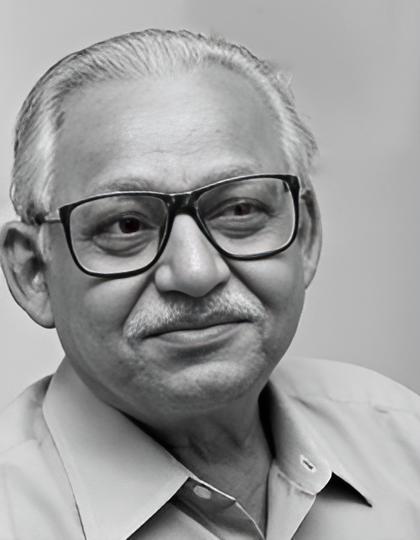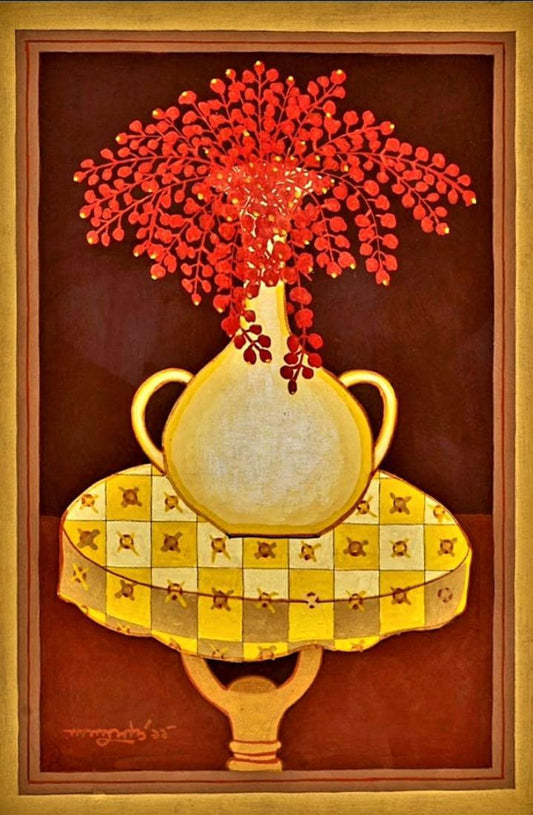
LALU PRASAD SHAW
Lalu Prasad Shaw’s work is defined by an understated elegance and formal precision that reflect a lifelong engagement with both image-making and the aesthetics of everyday life. His compositions are meticulously constructed, poised, measured, and suffused with a quiet lyricism. Rather than theatrical gestures or overt symbolism, Shaw’s figures exude grace through posture, line, and restraint. His palette is subdued but never dull, his textures fine but never fussy. Each element is balanced with care, reflecting not only technical mastery but also an enduring commitment to visual clarity.
Shaw’s early environment shaped his sensibility in lasting ways. Growing up in the artisanal neighborhood of poto para, he found lasting inspiration not in the central idols but in the painted pats and chaalis that framed them. The decorative vocabulary of these everyday vernacular arts would resurface in his mature work, refined, abstracted, and reimagined through a modernist lens. His formal training at the Government College of Art and Craft in Kolkata provided the foundation for a disciplined practice that has spanned more than six decades. Yet, he remained grounded in material engagement, once stating, “I’m not an artist, but a painter,” a phrase that reveals his pragmatic humility and preference for the tactile over the theoretical.
His paintings often draw on traditional Indian sources, Kalighat pats, Pahari miniatures, and the ornamented surfaces of Bengali craft, but these are not pastiches. They are translated into a contemporary idiom that speaks with its own authority. Shaw’s portraits of middle-class Bengali women and men are especially emblematic of his style. These are not psychological studies or character sketches but archetypes of calm, cultivated domesticity. The figures are rendered with gentle formality, often in profile or quiet contemplation, set against minimal backgrounds that foreground their presence without distraction.
Equally accomplished as a painter and printmaker, Shaw has developed a visual language that merges tradition and modernity without conflict or compromise. His process involves a structured approach to composition, followed by a slow, deliberate layering of color and texture, each decision carefully weighed. His works have been widely exhibited across India and internationally, and are held in major institutional and private collections. Consistently refined, deeply rooted in place and tradition, Shaw’s practice remains one of the most distinctive in Indian modern and contemporary art.



